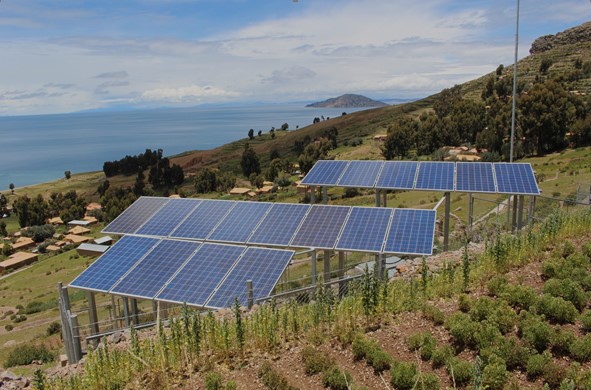How Technical Landscape Architecture Designs Come To Life

Landscape architecture design stands at the crossroads of creativity and precision, where outdoor spaces are transformed into captivating environments. The intricate dance between artistic vision and technical expertise gives birth to landscapes that mesmerize the eye and function seamlessly. This exploration delves into the fascinating realm of how technical landscape architecture designs come to life. We also look at how it is blending innovation, sustainability, and client engagement.
Initial Conceptualization: Crafting The Blueprint For Brilliance
The journey of a technical landscape architecture project commences with a meticulous process of conceptualization. Designers engage in comprehensive discussions with clients, understanding their requirements, aspirations, and the unique characteristics of the site. Through site analysis and assessment, designers gain insights into the topography, soil composition, and existing flora and fauna, laying the groundwork for the design journey.
Defining design objectives and constraints becomes the compass guiding the project. Whether it’s maximizing green space, integrating water features, or adhering to local zoning regulations, this phase sets the stage for the harmonious convergence of creativity and technical considerations.
Technical Tools And Software Use In Architecture Design: Precision Redefined
In the digital age, landscape architects harness a myriad of technical tools and software to bring their designs to life. Computer-aided design (CAD) becomes the virtual canvas, allowing designers to draft intricate plans and layouts with accuracy. The three-dimensional modeling and visualization techniques elevate the design process, providing clients with immersive previews of the envisioned spaces.It is a crucial section of the architecture design.
The integration of Geographic Information System (GIS) adds a layer of sophistication to site analysis. By leveraging GIS, landscape architects can tap into geographical data, climate patterns, and environmental considerations. They enrich the technical foundation of their designs.
Sustainability Integration: Nurturing Green Spaces For Generations
Technical landscape architecture design goes hand in hand with sustainability, fostering designs that are aesthetically pleasing and environmentally responsible. The incorporation of green infrastructure becomes a hallmark of sustainable designs, promoting biodiversity and mitigating the urban heat island effect.
Water management and conservation techniques take center stage, with landscape architects devising strategies to optimize water usage and reduce runoff. Energy-efficient landscaping solutions, such as strategically placed trees for shade, contribute to a holistic approach. They align with contemporary environmental priorities.
Hardscape And Softscape Elements: Balancing Form And Function In Architecture Design
A technical landscape design is a symphony of hardscape and softscape elements, seamlessly blending form and function. Designing functional hardscape structures requires an understanding of materials, structural engineering, and the practical needs of the space. From pathways and seating areas to architectural features, every element is thoughtfully integrated into the design for optimal functionality.
Equally important is the selection and placement of plantings, softscape elements that breathe life into the design. Landscape architects consider factors such as soil conditions, sunlight exposure, and water availability to curate a palette of plantings that not only enhance aesthetics but also thrive in their designated environment.
Collaboration With Civil Engineers And Contractors: Bridging Vision And Implementation
The technical intricacies of landscape architecture design often require collaboration with civil engineers and contractors. It helps to bridge the gap between vision and implementation. Ensuring feasibility and structural integrity are paramount considerations, demanding a seamless coordination of efforts among diverse professionals.
Civil engineers bring their expertise to the table, addressing grading, drainage, and soil stability issues. Contractors play a pivotal role in translating technical specifications into tangible results. They overcome the construction challenges and deliver on the nuanced requirements of the design.
Environmental Impact Assessment: Nurturing Nature In Urban Spaces
Technical landscape architects embrace the responsibility of conducting environmental impact assessments, delving into ecological studies. It helps to understand and minimize the project’s footprint. Mitigating environmental impact becomes a focal point with measures in place. They help to protect existing ecosystems, preserve natural habitats, and enhance biodiversity within the designed spaces.
This commitment to environmental stewardship extends beyond the project’s boundaries. It fosters a holistic approach that aims to create landscapes that harmonize with and contribute positively to their surroundings.
Lighting And Irrigation Systems: Illuminating The Night And Nurturing The Earth
Technical landscape architecture design extends its influence into the realms of lighting and irrigation systems, enhancing both aesthetics and sustainability. They implement efficient lighting solutions transform outdoor spaces into enchanting nightscapes, creating a visual spectacle and extending the functionality of the design beyond daylight hours.
Smart irrigation techniques come into play, utilizing technology to optimize water usage and ensure that plantings receive the precise amount of water needed for optimal health. These technical interventions contribute not only to the visual allure of the landscape but also to its long-term sustainability.
Exemplifying Technical Excellence
The world of technical landscape architecture boasts a portfolio of exemplary projects that stand as testaments to the marriage of artistry and precision. Noteworthy endeavors showcase innovative technical solutions, pushing the boundaries of what’s possible in outdoor design. For more information on these transformative projects and to explore the technical brilliance of landscape architecture, contact nadigroup.com
Analyzing these projects offers valuable insights into the technical innovations employed, lessons learned during the design and implementation phases, and best practices that set benchmarks for the industry. These case studies serve as a source of inspiration for aspiring landscape architects and a testament to the transformative power of technical excellence in outdoor design.
Incorporating Technology In Maintenance: Smart Solutions For Sustainable Landscapes
The technical prowess of landscape architecture extends into the realm of maintenance, where smart technologies play a pivotal role in ensuring the longevity and sustainability of designed landscapes. Monitoring systems equipped with sensors provide real-time data on environmental conditions, allowing for proactive maintenance interventions.
Educating clients on maintenance practices becomes an integral part of the process, empowering them to be stewards of the landscapes that have been meticulously crafted for them. By integrating technology into maintenance strategies, technical landscape architects contribute to the enduring beauty and functionality of their designs.
Challenges And Solutions In Technical Landscape Architecture: Navigating The Terrain
The journey of technical landscape architecture has its challenges. Navigating regulatory and zoning requirements demands a thorough understanding of local laws and regulations, requiring landscape architects to adeptly maneuver through bureaucratic landscapes. Budgetary constraints pose another challenge, necessitating creative solutions that balance design aspirations with financial realities.
Adaptive design solutions become invaluable in the face of changing environments, ensuring that landscapes remain resilient in the face of evolving conditions. The ability to think innovatively and address challenges head-on is a hallmark of technical landscape architects who navigate the terrain with finesse.
Future Trends In Technical Landscape Architecture: Anticipating Innovation
As technology continues to advance, the future of technical landscape architecture holds exciting possibilities. Advancements in sustainable technologies promise to redefine how landscapes interact with their environments. The integration of augmented reality into design visualization opens new avenues for client engagement and project communication.
Anticipating technological innovations allows landscape architects to stay at the forefront of the industry, embracing tools and techniques that elevate their designs and amplify the impact of their work. The evolving landscape of technology offers a canvas for creativity and innovation, inviting landscape architects to shape the future of outdoor design.
Client Engagement And Communication: The Human Touch In Technical Designs
Translating technical jargon into comprehensible language for clients is an art in itself. Effective communication becomes the bridge that connects designers and clients, ensuring that the technical intricacies of landscape architecture are conveyed in a way that resonates with those who will inhabit the spaces.
Collaborative design decision-making fosters a sense of ownership and connection for clients. Engaging clients in the design process, and seeking their input and feedback, transforms landscapes into shared visions. Effective communication is not just about relaying information; it’s about creating a shared understanding and weaving the human touch into technical designs.
Education And Professional Development: Nurturing Expertise For Tomorrow’s Designs
The journey of a technical landscape architect is one of continuous learning and professional development. Ongoing education and skill enhancement are integral to staying abreast of evolving technologies, design trends, and sustainability practices. Certifications and specializations in relevant areas empower landscape architects to offer specialized expertise in niche domains.
Staying informed about industry trends and innovations is not just a professional obligation but a commitment to delivering designs that are at the forefront of the discipline. The landscape architecture profession thrives on the passion and dedication of individuals who embrace the ethos of lifelong learning.
Conclusion: The Tapestry Woven By Art And Precision
In conclusion, the world of technical landscape architecture is a tapestry woven by the seamless integration of art and precision. From the initial conceptualization to the future trends shaping the industry, landscape architects navigate a terrain that demands a delicate balance between creativity and technical acumen.
The impact of technical designs on outdoor spaces is profound, extending beyond aesthetics to encompass functionality, sustainability, and the human experience. As we explore the intricate dance of technical landscape architecture, we witness the transformation of outdoor spaces into living canvases where artistry and precision converge.
Encouraging sustainable and innovative approaches in landscape architecture becomes a collective responsibility. Through technical excellence, client engagement, and a commitment to ongoing education, landscape architects become stewards of the environment, shaping outdoor spaces that inspire, captivate, and endure for generations to come.
Read More About Business By Clicking Below!!













